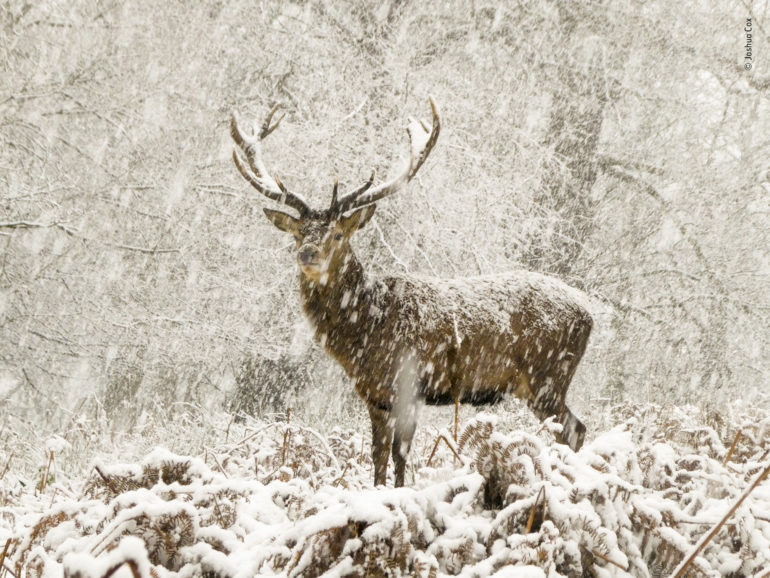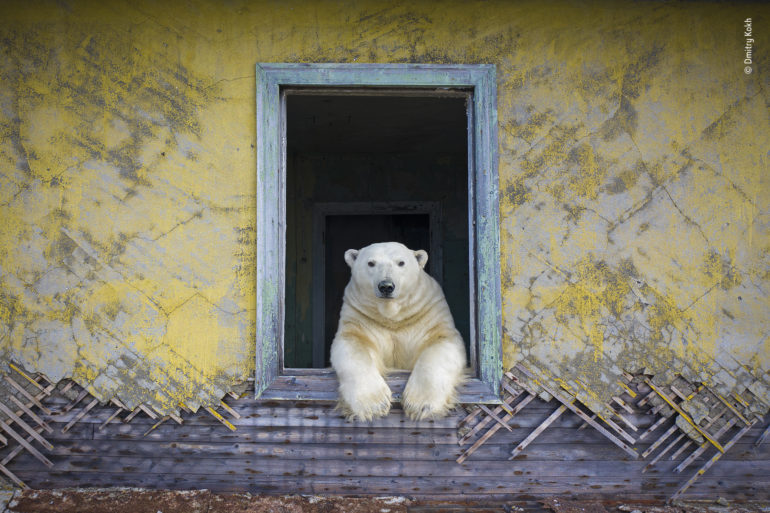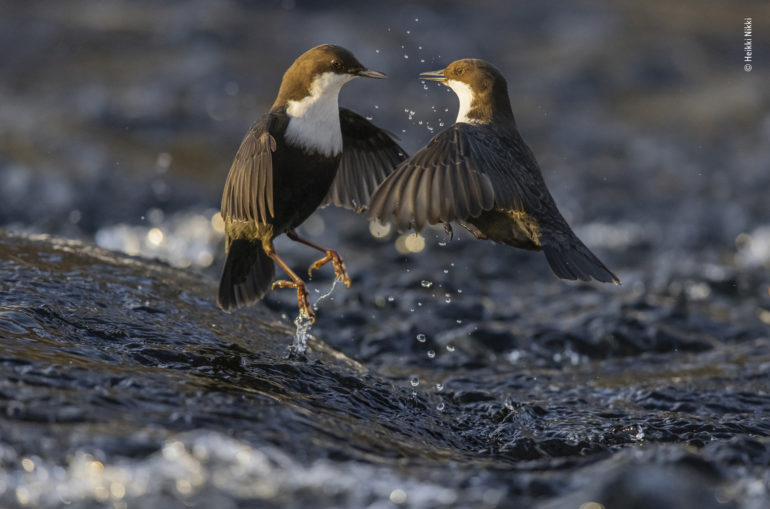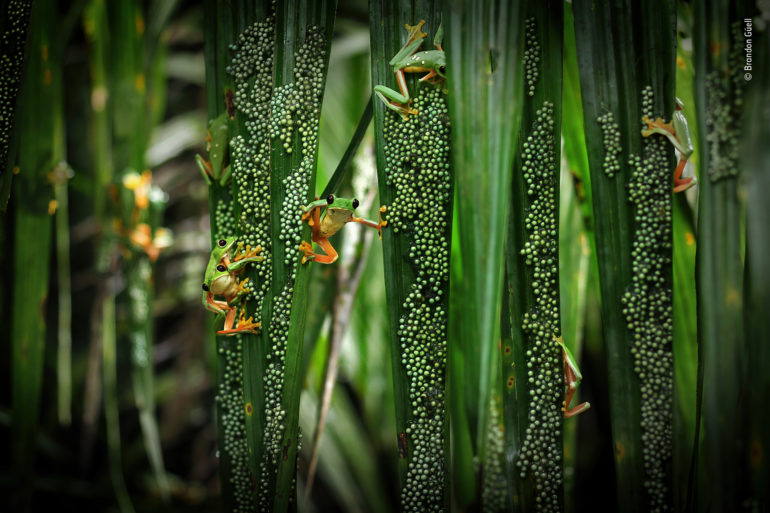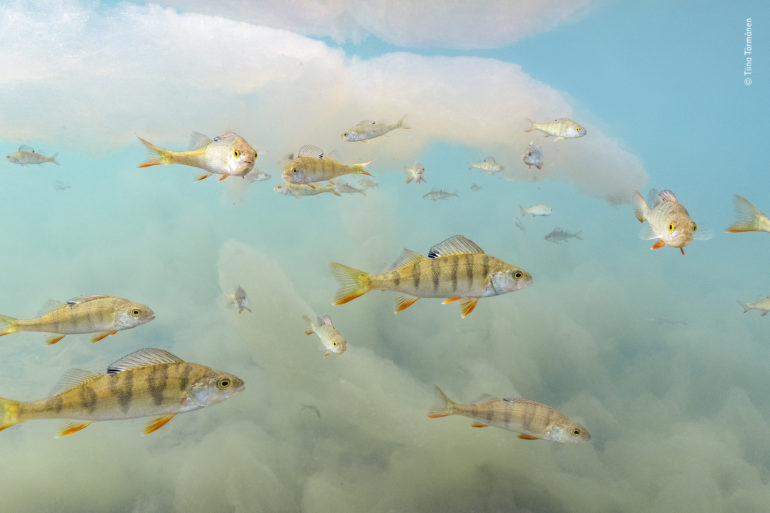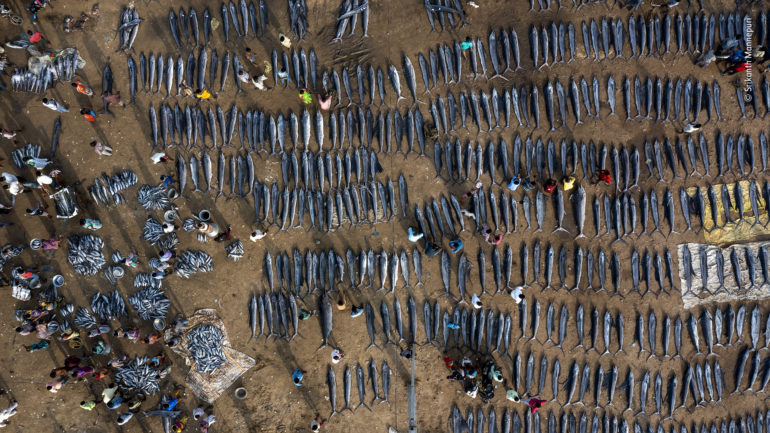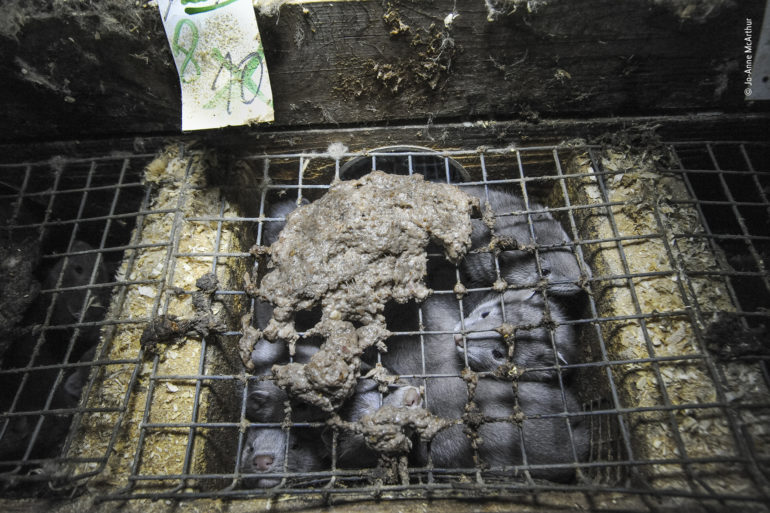While some photographers may think that contests aren’t worth it for them, I strongly disagree. I think that some contests bring out the very best of photographers. There are photos of wildlife that truly mesmerize us many times over amongst the recently released list of the highly commended wildlife photographers. This is a selection by the Wildlife photographer of the year awards, and it continues to show us the power of the still image. Specifically, it shows us the power of imagery where effort and a lot of work are put in vs. the simple snapshot. And looking at the gear used by wildlife photographers is also quite fascinating.
With that said, looking at this list, it’s easy to understand that it’s the photographer that matters. Getting access to some of these places is incredibly difficult to do. But also, having the skill and the nerve to press the shutter instead of running away is also something that not everyone can do.
The images presented here speak for themself. But we also believe that it’s fascinating to note the technology trends that are present here with gear used by wildlife photographers.
All images are used with permission. Provided to us by the Wildlife Photographer of the Year Awards.
Table of Contents
The Camera Used by the Highly Commended Wildlife Photographers of the Year List
While CIPA data tells us that mirrorless cameras are outselling DSLRs, it seems from the selection so far that that might not necessarily matter. Most of the cameras in this list are DSLRs and photographers have used them to create fantastic photos. However, there are so fascinating trends amongst all that data.
Here are the cameras listed. It’s an important part of the gear used by wildlife photographers beyond just their brain.:
- Nikon D700: For an image shot back in 2010
- Canon EOS 70D: For an image shot back in 2018
- Nikon D300: For an image shot back in 2018
- Leica M10: For an image shot in 2019
- Canon EOS R5: For a few images submitted
- DJI Mavic 2 Pro: For a few images submitted
- Canon 5DSR: For an image shot in 2020
- Canon 1DX Mk III: For an image shot in 2020
- Panasonic TZ90: For an image shot in 2021
- Canon Rebel T7: For an image shot in 2021
- Leica SL2: For an image shot in 2021
- Canon 1DX MK II: For an image shot in 2021
Here are some cool stats and trends we noticed amongst the gear used by wildlife photographers:
- Not a single Sony camera is on this list.
- The only camera on this list with Animal and Bird AI autofocus is the Canon EOS R5
- Not a single Fujifilm camera is on this list.
- No OM System cameras are on this list
- Pentax/Ricoh aren’t on this list.
- Leica, with off-camera lighting, enjoyed a surprising amount of popularity.
- The Canon EOS R5 is an insanely capable camera with the right lenses.
- A manual Rokinon lens was used for one of these photos. That’s surprising
- A Panasonic point-and-shoot proves that it’s very capable.
- Some judges (and I know this from a ton of personal experience working on contests) think that photographers want to shoot photos specifically for a contest. But as a lot of these submissions show and as I’ve known for years, that’s not the case. A lot of photographers go through their archives to find their best work and showcase them in contests like this. That image of minks shot in 2010 is mindblowing even today.
- Canon and Leica have the only mirrorless interchangeable lens cameras on this list.
- Drones continue to be an integral part of photojournalism.
- 6 lenses used are zoom lenses
The snow stag by Joshua Cox, UK: Highly commended, 10 Years and Under
Joshua Cox frames a red deer stag standing majestically as the snow falls.
It had just started to snow when Joshua and his father arrived in Richmond Park. They followed the deer at a safe distance when suddenly the snow intensified and one of the stags stopped. ‘He almost looked as if he was having a snow shower,’ says Joshua.
Richmond Park is home to herds of red and fallow deer, which have been roaming freely since 1637. The grazing deer help to manage the landscape of the park.
Location: Richmond Park, London, UK
Technical details: Panasonic Lumix DC-TZ90; 1/80 sec at f6.3; ISO 400
The octopus case by Samuel Sloss, Italy/USA: Highly commended, 15-17 Years
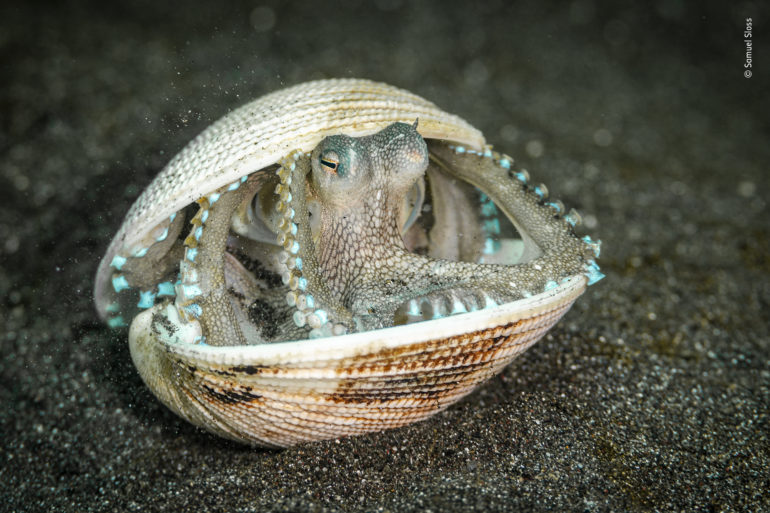
During one of my muck dives in the open black sands of Lembeh, I came across this coconut octopus who was carrying around its house made of shells. I did my best to approach it very slowly and took a series of shots to capture its fascinating behavior. I also lowered my strobes’ power so not to distress him or worse, stun him, which would have made him vulnerable to predators. After it got used to my presence, it curiously lifted the top shell to observe what I was doing!
The coconut octopus is one of the worlds most intelligent invertebrates and one of the sea creatures that has ever been seen using tools. Especially in the sandy slopes of Lembeh, with very few places to hide, it has developed unique survival strategies, which gave it the title of one of the ocean’s most resourceful animals. It can create mobile homes with coconut shells and other shells and can carry them around while “walking” on two of its arms. In a heartbeat, it can close the shells, making its den a very secure fortress.
Samuel Sloss is spotted by a coconut octopus, which peeks out from its clam-shell shelter.
Samuel was muck diving when he noticed this octopus. He lowered the power of his strobe lamp so as not to distress it. The octopus shut the lid of the shell when Samuel approached, but then slowly opened it, revealing colours and coils.
This small octopus hunts mainly shrimps, crabs, clams and small fishes. To protect its soft body when foraging on sand or mud, it hides in various objects – sometimes even coconut shells.
Location: Lembeh Strait, Sulawesi, Indonesia
Technical details: Nikon D300 + 105mm f2.8 lens; 1/320 sec at f6.3; ISO 200; 2x Inon Z-240 strobes; Nauticam housing
Burrow mates by Morgan Heim, USA: Highly commended, Animals in their Environment
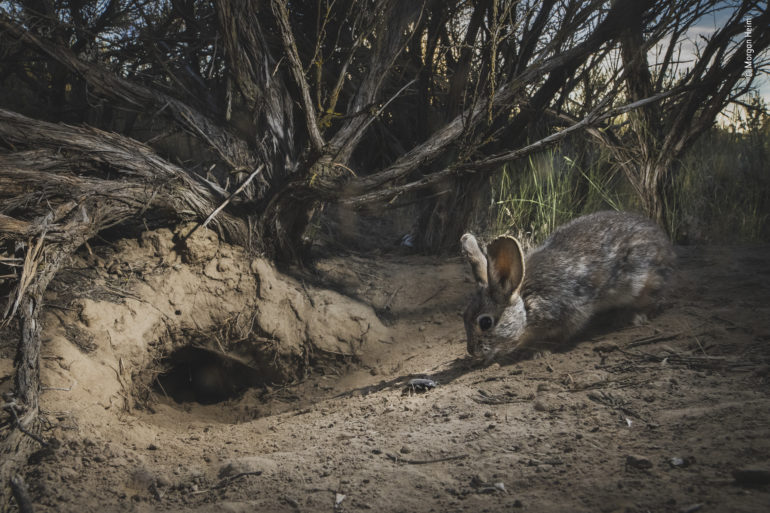
Morgan Heim reveals an intimate encounter between a beetle and a rabbit.
Morgan set up camera traps by the active burrows of pygmy rabbits in the Columbia Basin to observe their comings and goings. She was delighted by this moment of interaction as one of the rabbits sniffed at a stink beetle that had been sheltering in its burrow.
These rabbits live in Washington state’s Columbia Basin. The Basin has become increasingly overgrazed, and parts have been cleared for crop growing. With this small, isolated population facing extinction, conservationists have intervened, boosting numbers to 150 and rising.
Location: Near Quincy, Washington, USA
Technical details: Canon EOS Rebel T7 + Rokinon 14mm f2.8 lens; 1/160 sec at f16; ISO 800; 3x Nikon SB‑28 flashes; Camtraption PIR motion sensor
Polar frame by Dmitry Kokh, Russia: Highly commended, Animal Portraits
Dmitry Kokh shares an otherworldly encounter of polar bears taking over an abandoned settlement.
When Dmitry’s boat approached the small island of Kolyuchin, in the Russian High Arctic, which had been abandoned by humans since 1992, he was surprised to spot movement in one of the houses. Binoculars revealed polar bears – over 20 in total – exploring the ghost town. Dmitry used a low-noise drone to document the surreal experience.
Extremely inquisitive, polar bears will investigate abandoned structures for potential food. With climate change reducing sea ice, hunting is becoming increasingly difficult, pushing these bears closer to human settlements to scavenge.
Location: Kolyuchin Island, Chukotka, Russia
Technical details: DJI Mavic 2 Pro + Hasselblad L1D-20c + 28mm f2.8 lens; 1/320 sec at f3.2; ISO 100
The right look by Richard Robinson, New Zealand: Highly commended, Animal Portraits
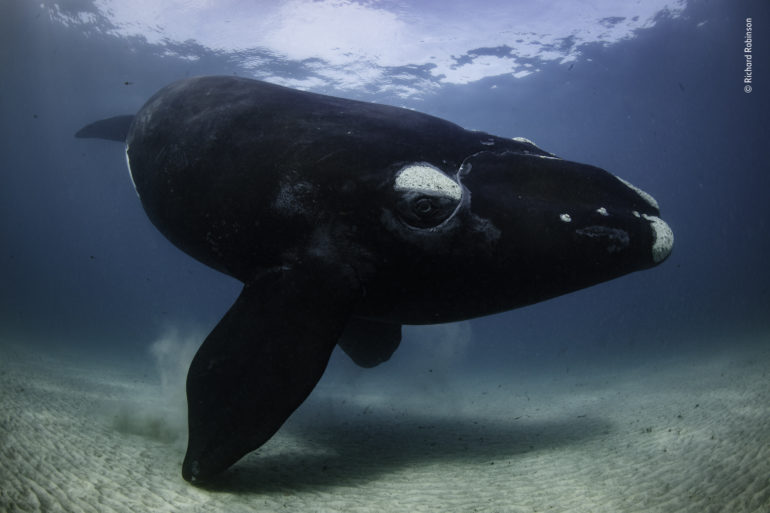
New Zealand’s whales, by contrast, are among the fattest and healthiest on the planet. Key to their success may be the apparent adaptability of their foraging strategies.
Richard Robinson becomes the object of fascination for a young whale.
With the whale investigating him, Richard’s main challenge was to swim far enough from the curious calf to photograph it. The encounter lasted 30 minutes, with the whale circling him, swimming off, then returning for another look.
New Zealand’s population of southern right whales, known as ‘tohorā’ in Māori, were hunted to near extinction by European whalers in the 1800s, then by Soviet whalers in the 1900s. Now protected, the population has bounced back from a small group including just 13 breeding females, to more than 2,000 individuals.
Location: Port Ross, Auckland Island, New Zealand
Technical details: Canon EOS 5DS R + 8–15mm f4 lens at 15mm; 1/500 sec at f4.5; ISO 640; Aquatica housing
Shot under New Zealand Department of Conservation permit #84845-MAR
Dipper dispute by Heikki Nikki, Finland: Highly commended, Behaviour: Birds
Heikki Nikki witnesses two dippers fighting over prime position.
After years of visiting the river, Heikki knew every ‘dipping’ rock favoured by white-throated dippers. Picking one hidden beneath flowing water, he sat quietly on the bank. Suddenly the spot became the subject of a hotly contested argument. Poised for the action, Heikki captured the fleeting moment.
Dippers use ‘dipping’ rocks as a launch pad to scout rivers before diving down to hunt mayfly and caddisfly larvae and small fish, swallowing tiny catches while submerged.
Location: Kuusamo, North Ostrobothnia, Finland
Technical details: Canon EOS R5 + 600mm f4 lens + 1.4x extender; 1/2500 sec at f5.6; ISO 6400; Gitzo tripod
Treefrog pool party by Brandon Güell, Costa Rica/USA: Highly commended, Behaviour: Amphibians and Reptiles
Brandon Güell wades through murky water to document a rare breeding frenzy of frogs.
Plagued by mosquitoes, Brandon waded chest-deep into the murky water where a gathering of male gliding treefrogs were calling. At dawn thousands of females arrived at the pool to mate and lay their eggs on overhanging palm fronds. Here, unmated males search for females to mate with.
These spectacular mass-breeding events occur in only a few remote locations, a few times a year. Each female lays around 200 eggs, creating huge egg masses. Eventually the tadpoles will drop into the water below.
Location: Osa Peninsula, Puntarenas, Costa Rica
Technical details: Canon EOS 70D + 50mm f1.8 lens; 1/125 sec at f2.8; ISO 250
The disappearing giraffe by Jose Fragozo, Portugal: Highly commended, Natural Artistry
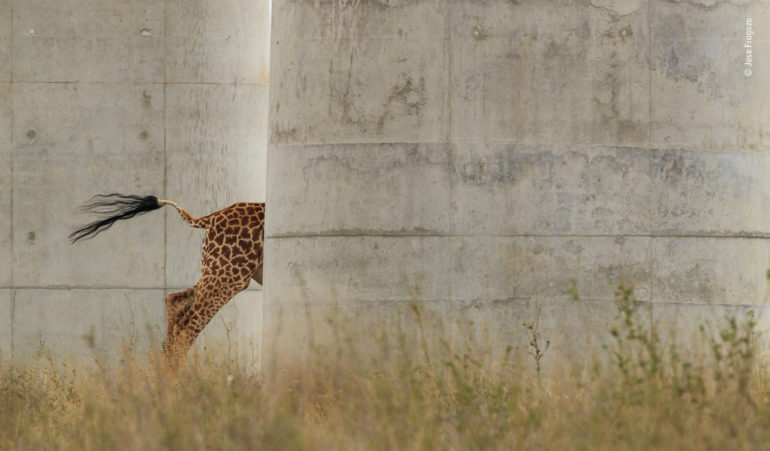
In 2019, Kenya completed the so-called Phase 2A Standard Gauge Railway (SGR), building a 6 km railway stretch on 178 pillars through the middle of the Park. Conservationists and environmentalists have warned that the impacts of SGR on the Park will be devastating. Nairobi National Park has already been affected by rapid urbanisation, infrastructure development and rising land prices around it.
This picture shows a giraffe running between railway pillars because it was likely to feel the noise and the vibration of an approaching train.
Jose Fragozo captures the contrast between the natural world and human infrastructure.
Keeping his camera steady in the moving vehicle, Jose followed the giraffe. Dwarfed by the giant pillars of Kenya’s new Standard Gauge Railway, the grey blocks contrast with the unmistakable pattern of nature’s tallest land mammal.
Around the world, human development increasingly encroaches on the range and habitats of animals. Though this stretch of railway running through Nairobi National Park is raised on giant columns, allowing animals access beneath, this picture is symbolic of how the space for wildlife continues to be squeezed.
Location: Nairobi National Park, Kenya
Technical details: Canon EOS-1D X Mark II + 600mm f4 lens; 1/1000 sec at f9; ISO 800
Underwater wonderland by Tiina Törmänen, Finland: Highly commended, Under Water
Tiina Törmänen floats through sheets of cloud-like algae in search of fish.
Tiina was thrilled to meet a school of inquisitive European perch on her annual lake snorkel. During the previous three years she had only ever found dead fish. Submerged in the surreal scene, she framed the orange-finned fish flying through clouds of pink-tinged algae.
Although it created a beautiful scene, excessive algal growth, a result of climate change and warming waters, can cause problems for aquatic wildlife as it uses up oxygen and blocks out sunlight.
Location: Posio, Finland
Technical details: Canon EOS R5 + 15–35mm f2.8 lens at 15mm; 1/250 sec at f8; ISO 500; Nauticam housing
Just one day’s catch by Srikanth Mannepuri, India: Highly commended, Oceans: The Bigger Picture
Srikanth Mannepuri takes a sobering look at the scale of unsustainable fishing.
Srikanth was shocked to see so many recently caught marlin and sailfish in a single place in one morning. To demonstrate the scale of the fish market, he used a drone to take the image from a bird’s-eye view.
Sailfish and marlin are top ocean predators essential to ecosystems. Globally, 85% of fish stocks are currently overexploited by humans. Without urgent efforts to protect marine habitats and create truly sustainable fishing practices, we will soon begin to lose species forever.
Location: Kakinada, Andhra Pradesh, India
Technical details: DJI Mavic 2 Pro + Hasselblad L1D-20c + 28mm f2.8 lens; 1/500 sec at f5.6 (+2.3 e/v); ISO 100
Sloth dilemma by Suzi Eszterhas, USA: Highly commended, Urban Wildlife
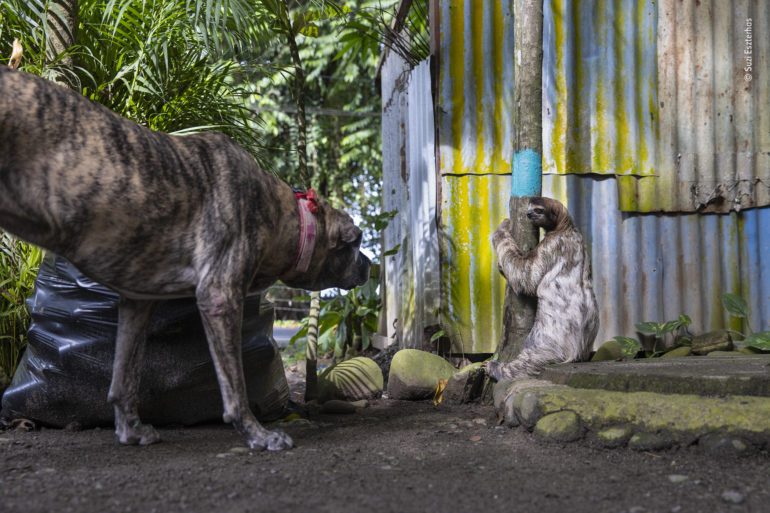
Bradypus variegatus
Dog sniffing sloth climbing down palm tree at Tasty Waves Cantina
Puerto Viejo de Talamanca, Costa Rica
Suzi Eszterhas captures an encounter between a sloth and a dog.
The brown-throated sloth had already made it across a road, but to reach the next clump of trees it needed to return to the ground and crawl. Meeting a big dog, it froze. Suzi watched fearfully but the dog, having taken part in a sloth-safety training programme, simply sniffed it.
Sloths live in trees and rarely descend to the forest floor. With increasing habitat loss and the fragmentation of the forest, they are forced on vulnerable journeys across urbanised areas to find food, suitable habitats and mates.
Location: Puerto Viejo de Talamanca, Costa Rica
Technical details: Canon EOS-1D X Mark III + 24–70mm f2.8 lens at 41mm; 1/200 sec at f4; ISO 400
The lost floods by Jasper Doest, The Netherlands: Highly commended, Wetlands – The Bigger Picture
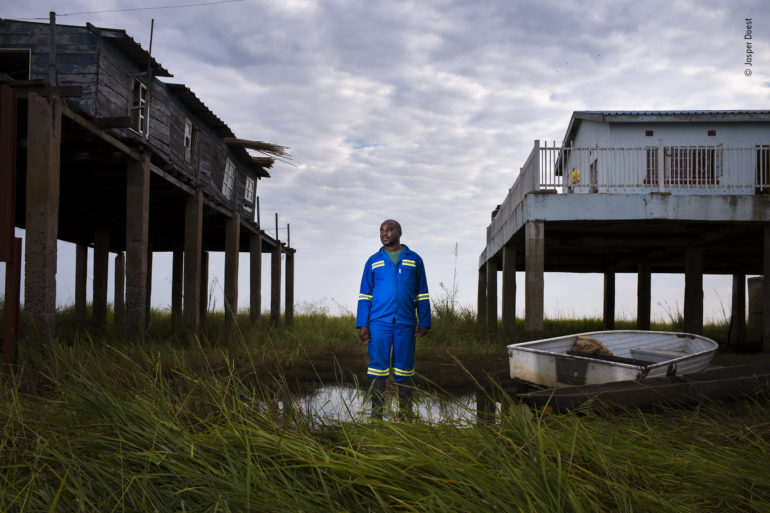
The Barotse floodplain act as a sponge, structuring much of the Zambezi catchment and providing a much-needed ‘safety-valve’ against climate effects such as droughts and floods for local communities but also for countries downstream. With droughts increasing due to changes in the global climate, the longterm ecological function of the Barotse floodplain is slowly disappearing, threatening not only the livelihoods of approximately 250,000 people and the economic stability of this part of the world, but also the area’s biodiversity.
Jasper Doest provides a portrait of Lubinda Lubinda, revealing the impact of drought on the Zambezi flood plain.
Lubinda Lubinda is station manager for the Zambezi River Authority. Lower water levels mean his new house (right) did not need to be built as high. Climate change and deforestation mean the Barotse people of the floodplain are subject to more frequent droughts.
A diversity of wildlife is dependent on regular floods, as is the Barotse people’s way of life. The wetland provides people with fish, pasture for livestock, fertile soil, and vegetation for thatching and making household items.
Location: Barotse Floodplain, Zambia
Technical details: Leica M10 + Summicron-M 35mm f2 lens; 1/250 sec at f5.6; ISO 500; Profoto B10 flash
Wanted! By Britta Jaschinski, Germany/UK: Highly commended, Photojournalism
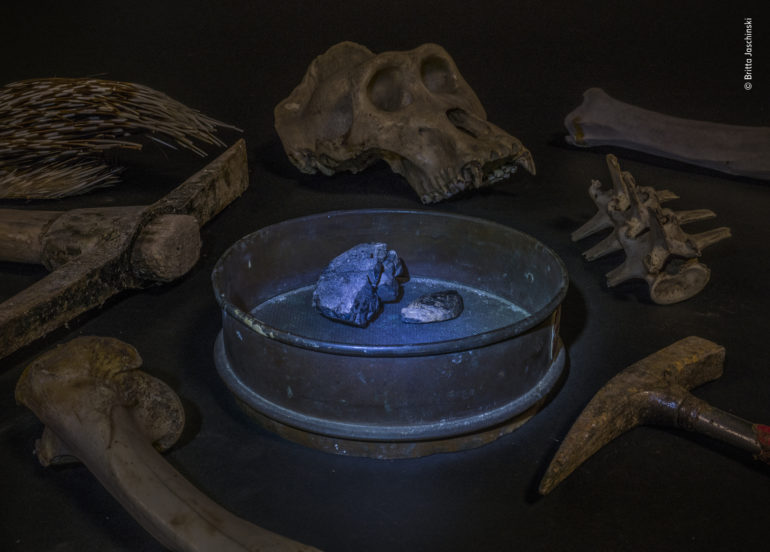
Encroachment into Nature – Coltan Mining
Miners invade and damage or even destroy forested areas in search of Coltan. The area where Coltan is mined also contains National Parks, such as the Kahuzi Biega National Park, home of the mountain gorilla. In this park alone the gorilla population has been cut nearly in half. As well, poverty is caused by the displacement of local human populations by the miners and has lead to the gorillas being killed for their meat. When humans cut their way through forests to dig up minerals that go into phones, computers, and other devices, they run the risk of being a catalyst for a phenomenon called “spillover.” That’s what happens when a virus makes the leap from one species to another. It’s how two-thirds of new infectious diseases, like COVID-19, emerge.
Coltan is short for columbite-tantalite, a dull metallic ore. When refined, coltan becomes a heat resistant powder, metallic tantalum, which has unique properties for storing electrical charge.
Coltan occurs in granitic pegmatites, pockets where the deep seated molten rock crystallized last. Pegmatites contain many rare metals, as well as enormous crystals of some common minerals.
Coltan is used in many electronics today around the world due to its unique electrical properties. The two man products include cell phones and laptops, though it is found in other electronics as well.
Coltan is mined by hand in the Congo. Their methods are very similar to how gold was mined in California during the 1800s. Groups of men dig basins in streams by scraping off the surface mud to get the Coltan below. Then they “sloth” the water around in large tubs, allowing the Coltan ore to settle to the bottom due to its heavy weight.
Within an interdisciplinary project by the Leibniz Institute for the Analysis of Biodiversity Change, measures are being developed to identify and deal with species protection crime. Within the framework of this project, I was able to photog
Britta Jaschinski uses torchlight to highlight the impact of coltan mining.
Glowing blue, coltan is a component of phone and laptop batteries. Here Britta surrounds it with mining tools and the remains of animals impacted by the industry, all seized by customs authorities: a gorilla skull, vertebrae and leg bone, and porcupine quills.
Coltan is extracted from the riverbeds of the Democratic Republic of the Congo by poorly paid miners who hunt wild animals for food. Hunting and trading wildlife threatens the future of the country’s gorillas and has led to an increased risk of viruses jumping to humans.
Location: Leibniz Institute for the Analysis of Biodiversity Change, Hamburg, Germany
Technical details: Leica SL2 + Vario-Elmarit-SL 24–90mm f2.8–4 lens; 1/5 sec at f22; ISO 800; torch; tripod
Life and death in fur farming by Jo-Anne McArthur, Canada: Highly commended, Photojournalism
Jo-Anne McArthur shows American mink kits fighting for space in a small cage on a fur farm.
For Jo-Anne it is important to document cruelty in order to instigate change. At a Swedish mink farm, the sign above a cramped, inhospitable cage indicates two kits have died. Due to legislation changes since this photo was taken, farms now have slightly larger cages, but the standard of life remains poor.
In 2020 scientists discovered that mink could catch the Covid-19 virus and that it could mutate and be transmitted to humans. In response, Denmark shut down its industry. In 2022 in Sweden, after a temporary ban on breeding, the government allowed some mink farms to reopen.
Location: Lindasen, Sweden
Technical details: Nikon D700 + 17–35mm f2.8–4 lens; 1/250 sec at f6.3; ISO 3200



